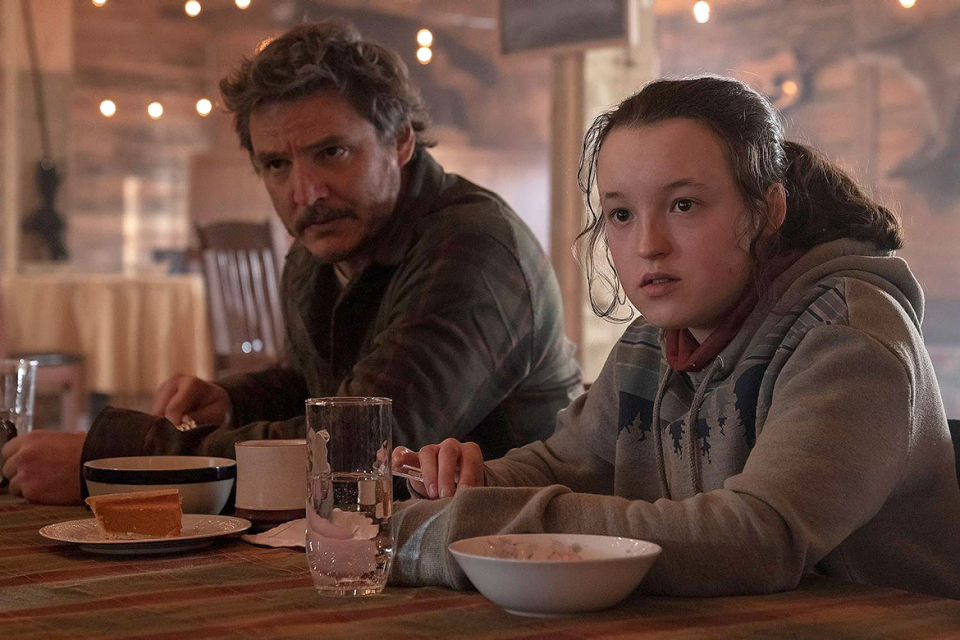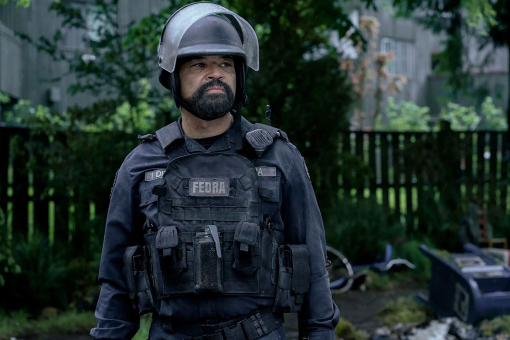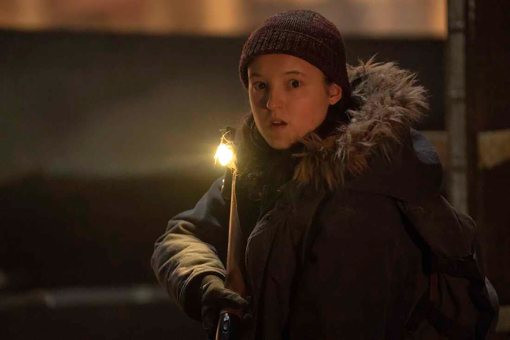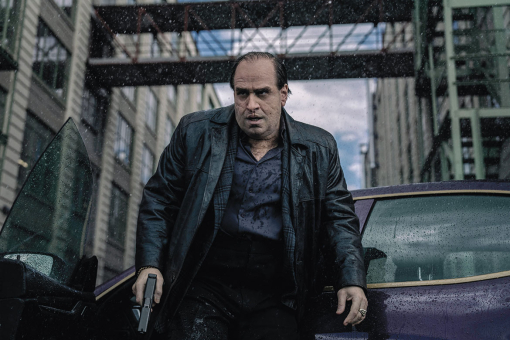After last week’s episode of HBO’s The Last of Us, “Feel Her Love,” focused on the intense danger that survivors Ellie (Bella Ramsey) and Dina (Isabela Merced) found themselves in with the infected nearly overpowering them, this week’s installment shifted focus to the past.
“The Price” — the sixth episode of season two, directed by the co-creator of the video game, Neil Druckmann, and written by Druckmann, Halley Gross and executive producer and co-showrunner Craig Mazin — reached back into key moments in Ellie’s relationship with her surrogate father, Joel (Pedro Pascal). In doing so, “The Price” unpacked their complex relationship before Joel was brutally killed in this season’s second episode, “Through the Valley.”
While “The Price” uses several heartfelt moments from Ellie’s birthdays as a narrative throughline, the heartbreaking hour didn’t shy away from the darker circumstances that lead to a significant and tragic rift between our heroes prior to Joel’s death. The episode’s cinematographer, Ksenia Sereda, shares with the Television Academy how she worked with Druckmann to elevate the emotional stakes of “The Price” and how the show gives its own unique spin on key scenes from the video game series.
 Ksenia Sereda joins Neil Druckmann on the set of The Last of Us / Photo Credit: Liane Hentscher / HBO
Ksenia Sereda joins Neil Druckmann on the set of The Last of Us / Photo Credit: Liane Hentscher / HBO
Television Academy: Why was this the ideal time for “The Price” to air in season two?
Ksenia Sereda: My guess would be that in Ellie's journey, she reaches this moment of blackout rage and violence in the end of episode five. And it happens right after the moment when we get to know that Ellie actually knows what happened in the hospital. And we're like, “How does she know that? Did Joel tell her?”
Episode six is a very important episode because it dives deeply into the Joel/Ellie relationship. It unfolds by focusing on what happened over these last five years and it is about how their relationship evolved and, sadly, how they became more and more distant. Visually, it is a very special episode, too.
Neil [Druckmann] knows how iconic a lot of scenes are to people and how important they are from the game. But at the same time, he had a freedom to change things, and he was very open to find something new and maybe something that might work better.
This episode also has a lot of flashbacks, as we see previously unrevealed moments from Ellie and Joel’s relationship. How did you approach shaping the unique visuals for each of those flashbacks?
The episode has a structure where we have different flashbacks into Ellie's birthdays. When we were talking with Neil, we talked about giving each sequence its own signature. So, overall, when you're watching it, each sequence would have its own vibe or some super signature shots that would stand out in each sequence. They are there to help us tell the Joel and Ellie story — which is both warm and heartbreaking. It’s very, very tough to watch but, overall, that’s why it's also special.
 Photo by: HBO
Photo by: HBO
You mentioned that Neil did change up some things from the game in this episode. What was one of those changes?
It's a technical thing, but it's very exciting for me, because this episode has this very beautiful moment of magical realism sprinkled throughout the sequence when Joel and Ellie go to the Museum of Natural History and he gives her a tape recording of the space launch. This scene exists in the game — it’s so beautiful and touching. The whole scene is happening on her closeup, and we can see the lighting as the countdown happens and the lighting starts to change as the capsule is vibrating. We really wanted to recreate this sequence but enhance that. Neil was very open to explore different and new angles.
One of the big goals of this scene is to give Ellie this moment of childhood and how you can picture a child's imagination inside of the sequence. When the lighting sequence ends, Ellie turns towards us from this profile shot and she's smiling and we're back to normal with soft, warm lighting. Then, when we cut to Joel, we see that he has a lone tear rolling down face. I think that's the beauty of having a live-action version of the scene, because you're getting, like, all these sweet performance pieces which are heartwarming and heartbreaking.
In the scene where Joel is playing the Pearl Jam song “Future Days” for Ellie, there's a cut to Ellie's face watching him play, and it reminded me of when Dina watches Ellie play A-ha’s “Take On Me” in Episode 4. They both have this look of love on their faces as they watch and listen. Was matching those moments intentional?
Script-wise, it is intentional, for sure, to mirror these scenes. In the game, playing the guitar is such a big thing. You can actually press on [a control] and you are helping your character play the guitar in the game. But [in the show] you get a chance just to watch the performance, which is also very exciting. You’re right that it has a similarity, but it also makes the previous scenes even more sad. We had a hint of this in episode five, when Ellie is on stage, and she sings just one line from the song and stops. After that, it’s like “Oh, she was thinking of him.”
Was the scene that revisits the New Year’s Eve party from the season two premiere shot around the same time as the premiere, or did you have to recreate the set and staging again for this episode?
Funny enough, it was shot separately a few months later — but dedicated to Joel. I had a very good understanding of what the lighting was for that scene, so recreating it from the technical point was pretty easy. It was a different angle but, at the same time, we had a lot of reference [material]. We took all the pictures — all the stills with all the marks and measurements — so that we could recreate where people were in the moment.
In the episode’s final scene between Joel and Ellie, which we know is their last real conversation before he dies, can you talk about setting that space on the porch?
We really wanted it to be very warm. We wanted them to be isolated in this warm bubble inside of this dark space. And in a way — as you progress into close ups [during the scene] — it feels very interesting because they're warm, but the outside darkness and the world are very separate. It was very important for Neil that it be very warm and have this very warm glow from the house. And after that, it was all about the performance — which was absolutely amazing and just heartbreaking.
This article has been edited for length and clarity.
The Last of Us is now streaming on HBO Max.











